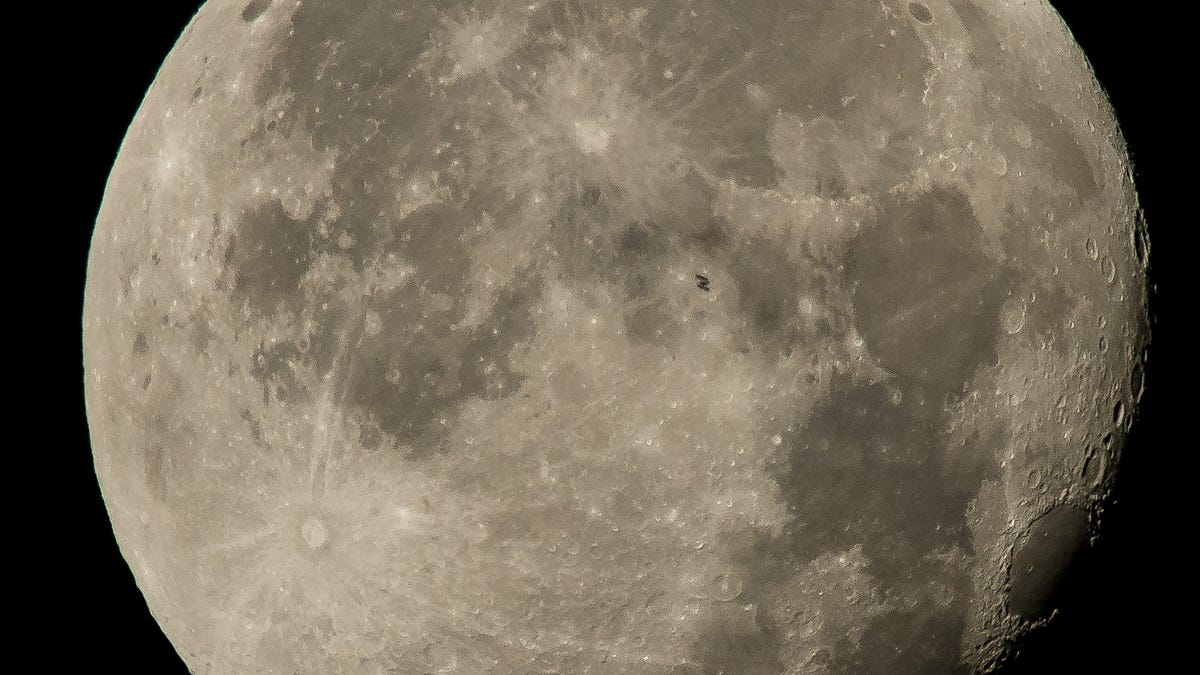How to see the ISS pass in front of the full 'strawberry moon' this weekend
There's a partial lunar eclipse going down this weekend, but you can also spot the actual men in the moon, or at least the astronauts passing it by.
There's a lot going on on planet Earth right now, but there's also quite a lot of action happening in space this week, and it might offer a much-needed break from all the problems here on the surface.
The big event Friday evening and Saturday morning is the full "strawberry moon" and partial penumbral lunar eclipse. But super space nerds or ambitious sky watchers can up their nighttime game by trying to spot another subtle eclipse of the big, bright moon over the next few evenings.
The International Space Station is easily the largest artificial satellite in orbit, and over the past two decades, many people have made a hobby of spotting it as it whips around Earth at over 17,000 miles per hour (27,000 kilometers per hour). NASA has even built a website dedicated to finding the station in the sky.
The ISS has been a center of attention this week as SpaceX successfully launched NASA astronauts Bob Behnken and Doug Hurley to the station for the first time. They're now enjoying some of the best moon views around from orbit.
For avid ISS fans, there are resources online to help you not only spot the station, but also find when and where it can be seen passing in front of the moon.
The CalSky online astronomy calculator offers a handy map that shows times (all local) and locations where the ISS can be seen passing in front of the moon over the next few days. You can also plug in your location to see if there are any viewing times coming up nearby.
For example, if you're up late along the Pacific Coast of Mexico, you should be able to catch the ISS cruising in front of that big natural satellite in the sky between about 3:32 a.m. and 3:36 a.m. Saturday morning depending on your exact location.
Perhaps the best place to be moon-watching is in eastern Africa and Madagascar, where it may be possible to see the partial lunar eclipse and the ISS eclipsing the moon, at the same time.
Regardless, wherever you are, the full moon will be big and bright for the next few evenings and worth checking out.


